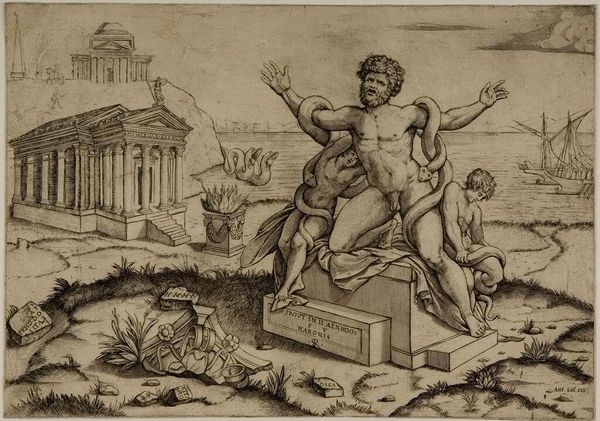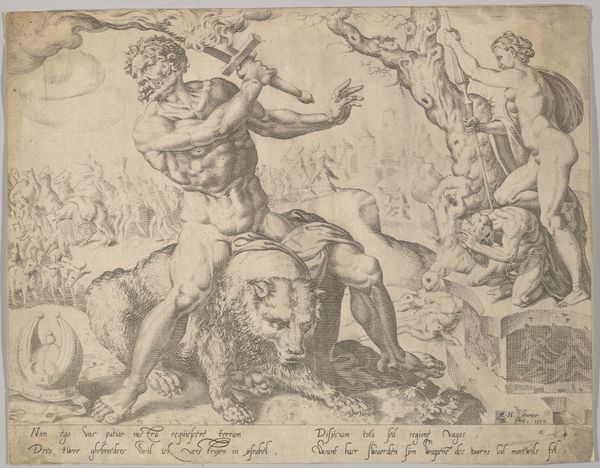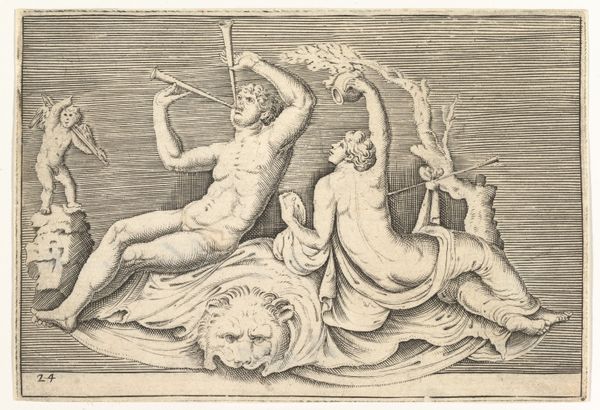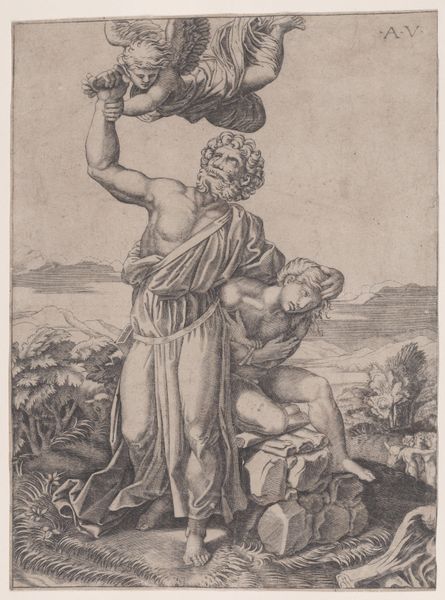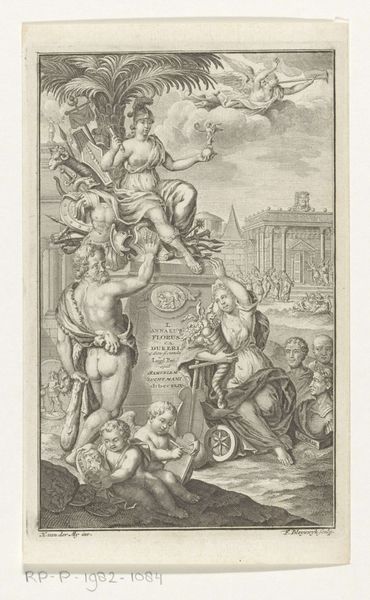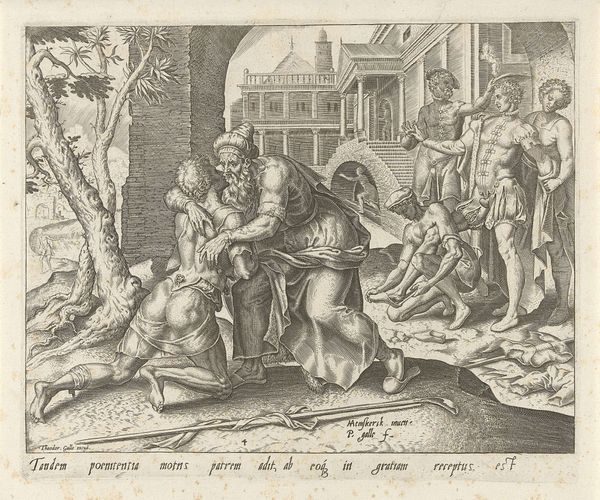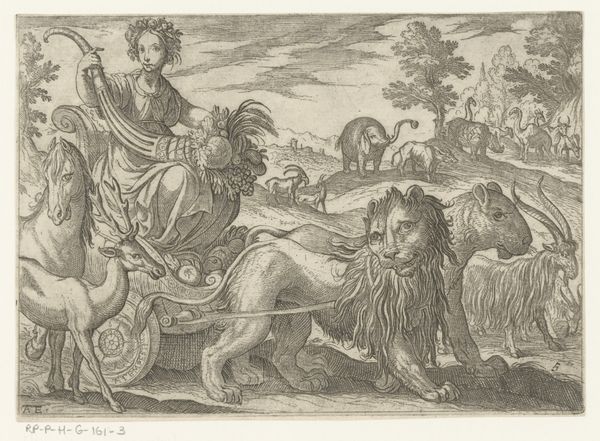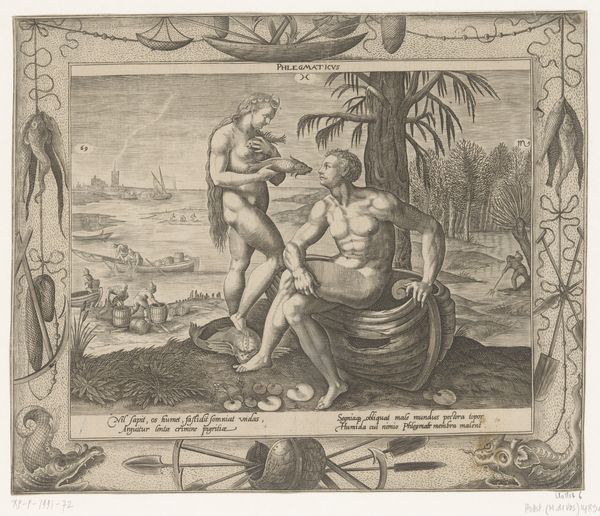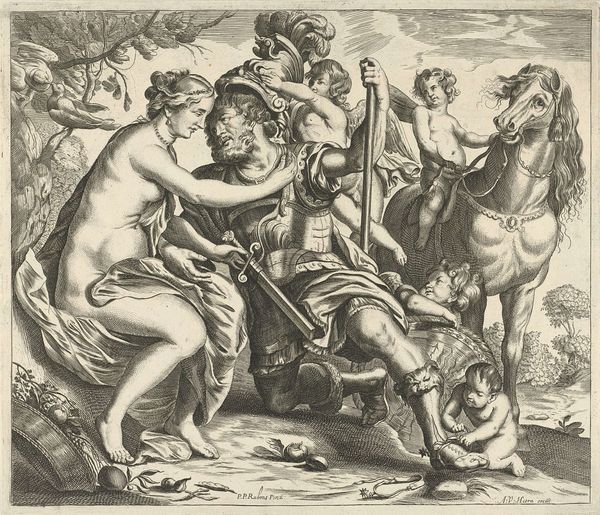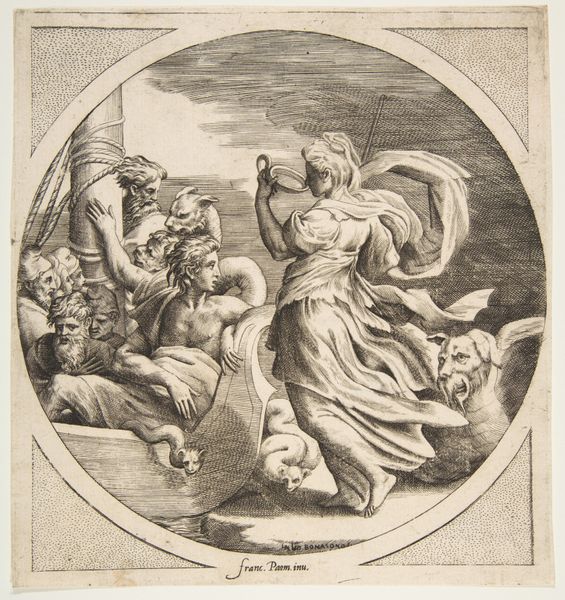
Laocoön and his two sons being attacked by serpents upon a pedestal, a temple to Minerva behind them, another temple and the sea in the background 1510 - 1532
0:00
0:00
drawing, print, pen, engraving
#
drawing
# print
#
landscape
#
classical-realism
#
figuration
#
pen
#
history-painting
#
italian-renaissance
#
nude
#
engraving
#
male-nude
Dimensions: Sheet (Trimmed): 11 1/8 × 15 5/8 in. (28.2 × 39.7 cm)
Copyright: Public Domain
Curator: I find this image instantly compelling. There's something very vulnerable about it, a feeling of claustrophobia and helplessness, all rendered in a delicate engraving. Editor: Indeed. What we have here is a print made by Marco Dente, active primarily in the first third of the sixteenth century. This engraving, made with pen, depicts Laocoön and his two sons being attacked by serpents upon a pedestal. In the background we see a temple to Minerva and the sea. It is currently held at the Metropolitan Museum of Art. Curator: The figures! Look at how their bodies writhe and struggle, the father’s face a mask of anguish. But what really strikes me is the background—the architectural structures give such a striking commentary to what is going on in the foreground. Editor: Absolutely. The serpent itself is such a multifaceted symbol. Consider its connections to medicine, healing, but also deception and chaos. The struggle of Laocoön mirrors a struggle against unseen forces, a rebellion against fate, perhaps a challenge to divine authority. It may point toward certain religious upheavals from this time, and humanisms assertion against the old order. Curator: I see that connection as well. Note how their bodies are the only point of raw feeling on the whole plate; even in pain, these figures become monumental in the space they are given, against an otherwise very structured world that they appear in. Is there any relation in that the temple is set for Minerva, or Athena, patron of strategic war? Editor: Minerva embodies wisdom and warfare, reflecting perhaps the futility of human strength against divine will. Her distant presence underscores the insignificance of the individual against larger cosmic forces, yet Dente draws such focus to these figures that it gives the classical and strategic god a striking challenge to the story that is going on in the immediate space of the image. It may speak to what role did society and structures hold within ones’ own pain? The sea in the background can signal transition, knowledge, reflection. The artist truly provides space for considering various readings of the tragedy through carefully placed imagery. Curator: And how potent this work remains, continuing to evoke those feelings so intensely even today, doesn’t it? Editor: A testament to the endurance of the themes of human struggle and the timeless language of symbolism that connect us through centuries.
Comments
No comments
Be the first to comment and join the conversation on the ultimate creative platform.
